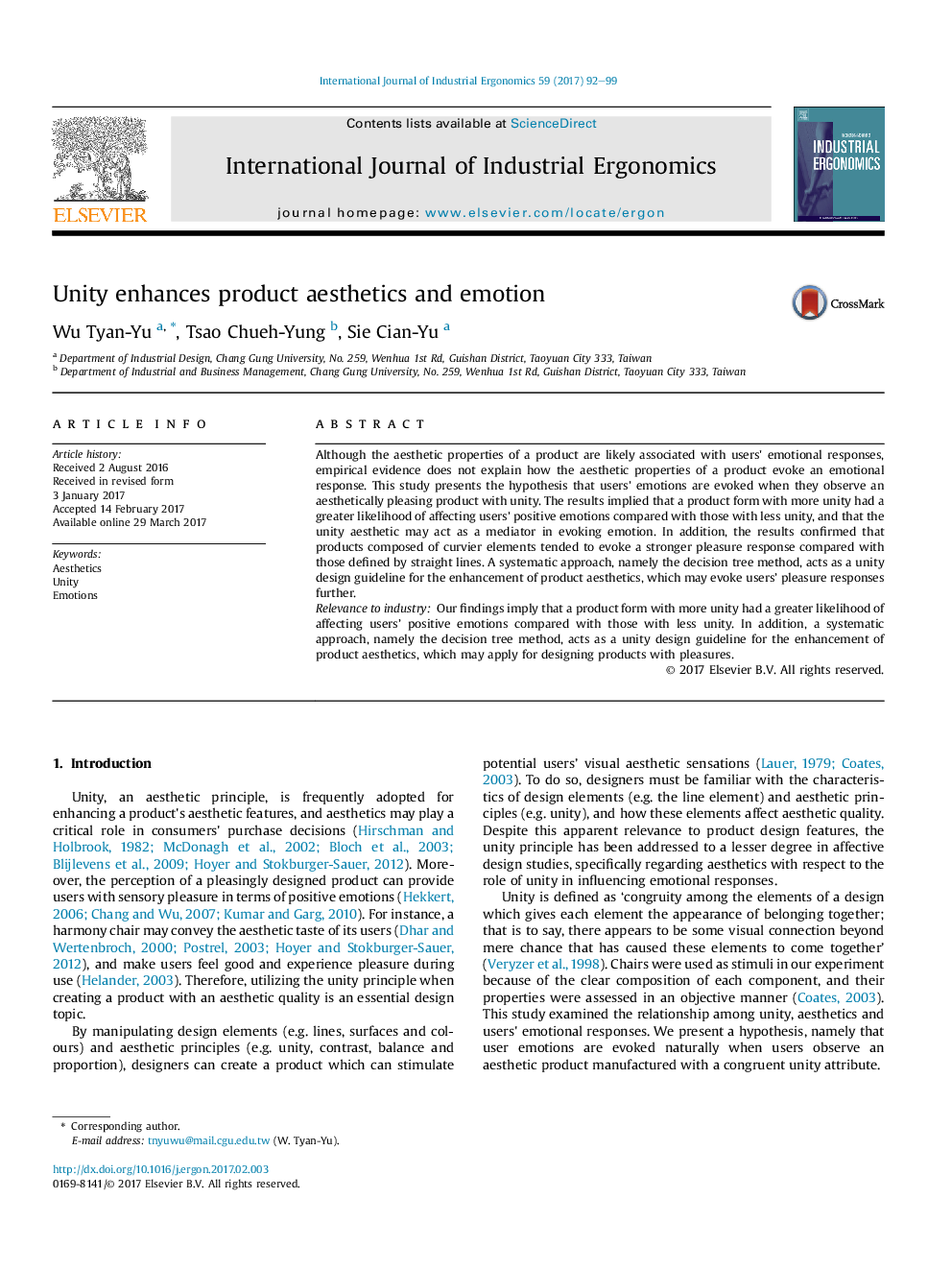| Article ID | Journal | Published Year | Pages | File Type |
|---|---|---|---|---|
| 5123696 | International Journal of Industrial Ergonomics | 2017 | 8 Pages |
â¢Product forms with more unity had a greater effect on users' positive emotions compared with those forms with less unity.â¢Products composed of curvy elements evoke a stronger pleasure response compared with products defined by straight lines.â¢The decision tree method may benefit designers seeking an aesthetically pleasing product, which evokes consumers' pleasures.
Although the aesthetic properties of a product are likely associated with users' emotional responses, empirical evidence does not explain how the aesthetic properties of a product evoke an emotional response. This study presents the hypothesis that users' emotions are evoked when they observe an aesthetically pleasing product with unity. The results implied that a product form with more unity had a greater likelihood of affecting users' positive emotions compared with those with less unity, and that the unity aesthetic may act as a mediator in evoking emotion. In addition, the results confirmed that products composed of curvier elements tended to evoke a stronger pleasure response compared with those defined by straight lines. A systematic approach, namely the decision tree method, acts as a unity design guideline for the enhancement of product aesthetics, which may evoke users' pleasure responses further.Relevance to industryOur findings imply that a product form with more unity had a greater likelihood of affecting users' positive emotions compared with those with less unity. In addition, a systematic approach, namely the decision tree method, acts as a unity design guideline for the enhancement of product aesthetics, which may apply for designing products with pleasures.
